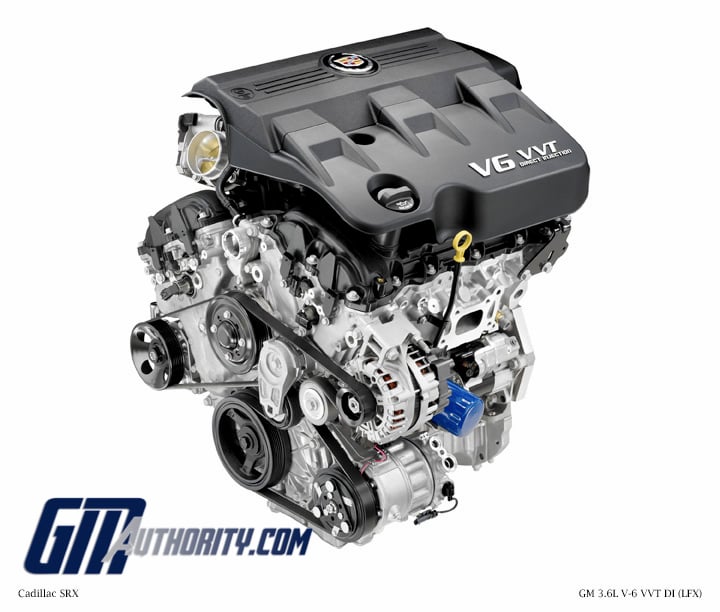Unlocking the Power: Exploring the Chevy 3.6L V6 Engine
The Chevy 3.6L V6 engine has become a ubiquitous powerplant, driving everything from family sedans to rugged SUVs. But what makes this engine so popular? Is the Chevy 3.6L V6 performance truly something to write home about? Let's delve into the specifics of this engine and explore its strengths, weaknesses, and overall capabilities.
The 3.6L V6 isn't just about getting you from point A to point B; it offers a blend of power and efficiency that appeals to a wide range of drivers. From its smooth operation to its respectable horsepower and torque figures, this engine has carved a niche for itself in the automotive landscape. We'll examine what contributes to the Chevy 3.6L V6's performance profile and what you can expect from this workhorse of an engine.
Understanding the Chevy 3.6L V6's performance characteristics involves looking beyond just horsepower and torque. Factors such as fuel economy, reliability, and maintenance requirements all contribute to the overall ownership experience. This comprehensive look at the 3.6L V6 will equip you with the knowledge you need to make informed decisions about your next vehicle purchase or how to best maintain your current one.
The High Feature engine, as GM calls it, has seen numerous iterations and improvements over the years. We’ll explore the evolution of the Chevy 3.6L V6, tracing its lineage from its early days to its current form. This historical perspective will help illustrate how the engine’s capabilities have been refined and optimized over time. Understanding the history of the 3.6L V6 provides context for its current performance levels.
One of the key aspects of understanding the Chevy 3.6L V6 engine's capabilities is examining its power output. This engine typically delivers between 270 and 310 horsepower, depending on the application and model year. Torque figures also vary, generally falling in the range of 250 to 270 lb-ft. This respectable power output allows the 3.6L V6 to handle a variety of tasks, from everyday commuting to towing light trailers. This flexibility contributes to the engine's widespread appeal.
The 3.6L V6 was first introduced in the 2004 Cadillac CTS and has since become a staple in GM's lineup. Its importance stems from its versatility, powering a diverse range of vehicles across different brands. One main issue associated with earlier versions of the 3.6L V6 was timing chain wear. However, GM has addressed this concern in later iterations of the engine, improving its reliability and longevity.
One benefit of the 3.6L V6 is its relatively good fuel economy for its size and power output. For example, some vehicles equipped with this engine achieve close to 30 mpg on the highway. Another advantage is its smooth and refined operation, making for a comfortable driving experience. Lastly, its widespread availability ensures readily accessible parts and service.
Advantages and Disadvantages of the Chevy 3.6L V6
| Advantages | Disadvantages |
|---|---|
| Good fuel economy | Potential timing chain issues (older models) |
| Smooth and refined operation | Not as powerful as some V8 options |
| Widely available parts and service | Can be noisy at higher RPMs |
Best Practices:
1. Regular Oil Changes: Use the recommended oil type and change intervals.
2. Cooling System Maintenance: Flush the coolant periodically.
3. Spark Plug Replacement: Adhere to the manufacturer's recommended replacement schedule.
4. Timing Chain Inspection (older models): Be proactive in checking for wear.
5. Fuel System Cleaning: Use quality fuel and consider periodic fuel system cleaning.
Frequently Asked Questions:
1. What is the lifespan of a Chevy 3.6L V6? With proper maintenance, it can last over 200,000 miles.
2. What type of oil is recommended? Consult your owner's manual for the specific recommendation.
3. Is the timing chain issue common? It was more prevalent in earlier models.
4. What vehicles use the 3.6L V6? Various Chevy, Buick, GMC, and Cadillac models.
5. What is the towing capacity? It varies depending on the vehicle and model year.
6. What is the average fuel economy? Depends on the vehicle, driving style, and conditions.
7. Are performance upgrades available? Yes, aftermarket parts can enhance performance.
8. Is the 3.6L V6 a reliable engine? Generally considered reliable, especially newer versions.
Tips and Tricks: Use quality fuel, monitor oil levels, and address any unusual noises promptly.
The Chevy 3.6L V6 engine offers a compelling blend of power, efficiency, and versatility. While earlier iterations faced some challenges, particularly with the timing chain, subsequent improvements have addressed these concerns, making it a reliable and capable engine. Understanding its performance characteristics, maintenance requirements, and potential issues is key to maximizing its lifespan and enjoying a trouble-free ownership experience. Whether you're looking for a comfortable daily driver or a capable hauler, the Chevy 3.6L V6 delivers respectable performance and continues to be a popular choice among drivers. By following the best practices outlined and staying informed about this versatile powerplant, you can ensure that your 3.6L V6 continues to perform at its best for years to come. Do your research and consider the Chevy 3.6L V6 for your next vehicle; it might be the perfect fit for your needs.
Creating a tranquil space with behrs quiet time paint color
Decoding your paycheck understanding how your salary is calculated
Cara hantar borang e syarikat your complete guide














